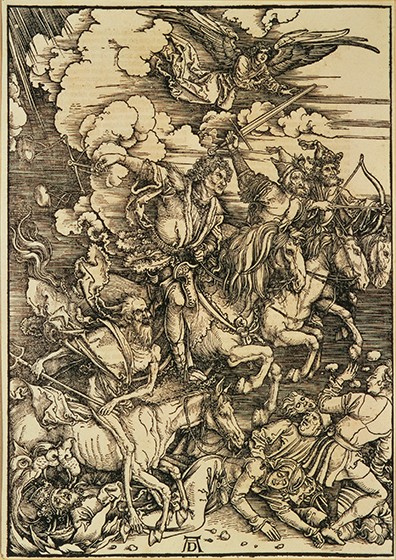Four Horsemen of the Apocalypse, by Albrecht Dürer

A self-published collection of 15 woodcuts, The Apocalypse, by Albrecht Dürer (1471–1528) continues to influence how artists employ woodcuts and how the faithful interpret the apocalyptic visions of scripture. Woodcut is a printing technique in which the image is created in reverse on a block of wood. The artist must cut away the negative spaces, leaving the printing surface raised above other portions of the block. Since this design will be reversed left to right by printing, the carving must be the mirror reverse of the intended image. In one of his most famous and often reprinted woodcuts, Four Horsemen of the Apocalypse, Dürer compresses these apocalyptic images into one scene (see Rev. 6:1–8). The far horseman, drawing his bow, represents Pestilence. The second, wielding a sword, portrays War. The third, swinging the empty scales of justice, signifies Famine. In the foreground, Death with a pitchfork is sweeping citizens and a king (or bishop) into the mouth of Hades. Dürer conveys the riders’ swift and terrible movement through their windblown draperies and the recoiling humanity about to be trampled by their horses. The images continue to fuel the popular imagination, as evident in songs like “The Four Horsemen,” by the heavy metal band Metallica.



